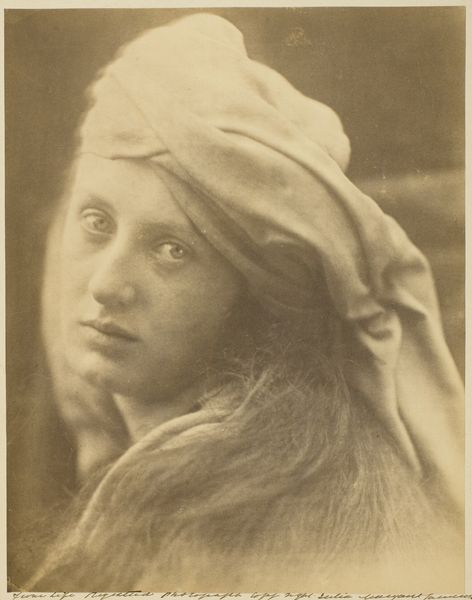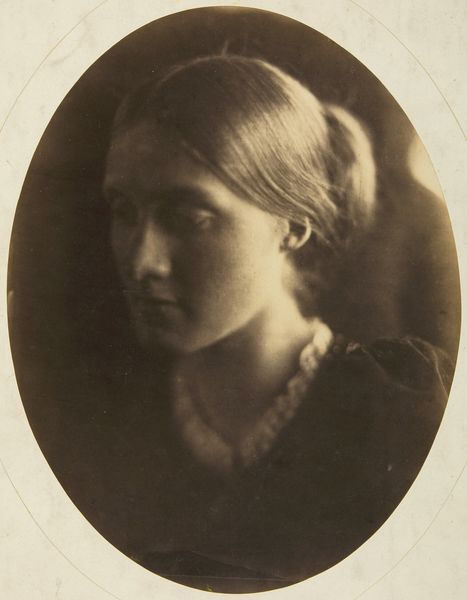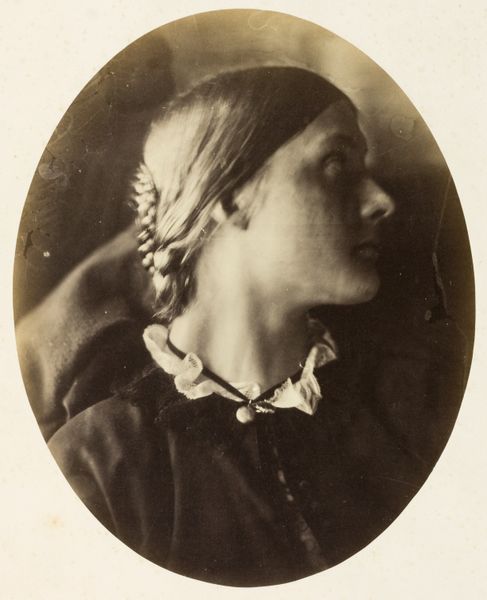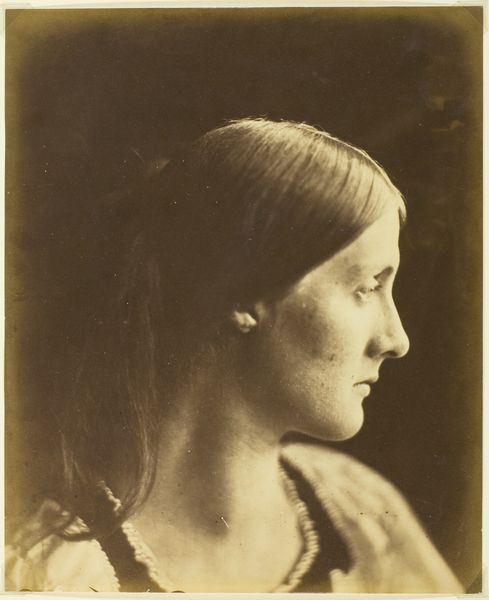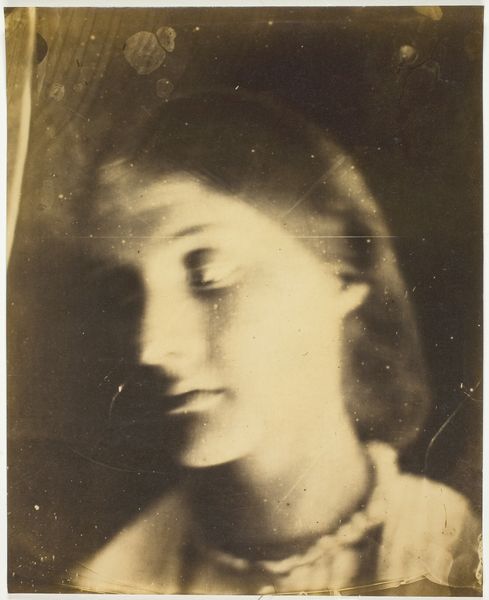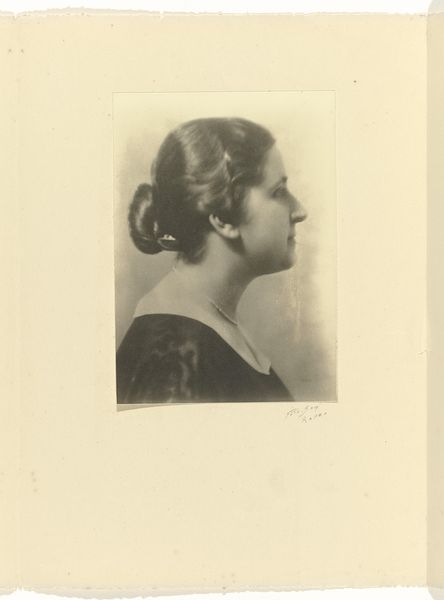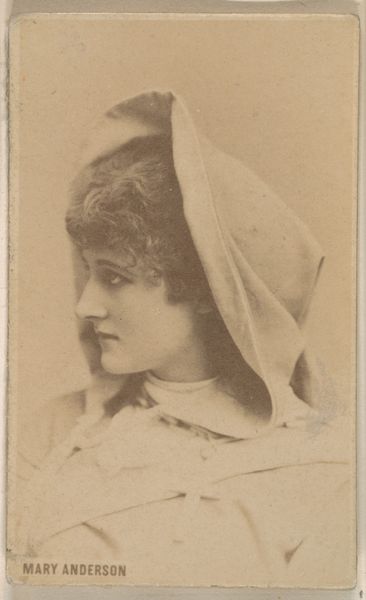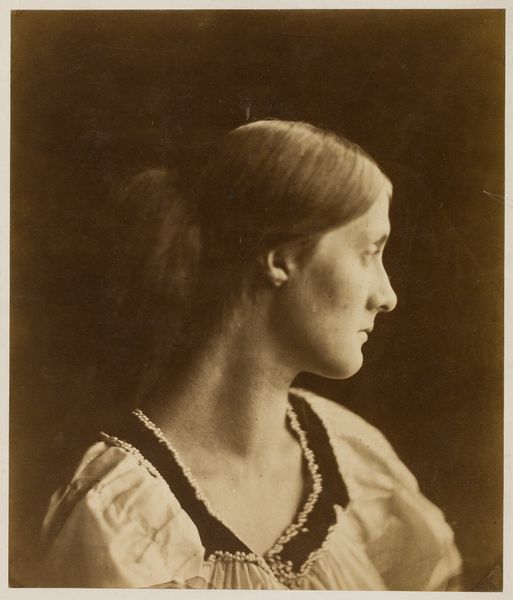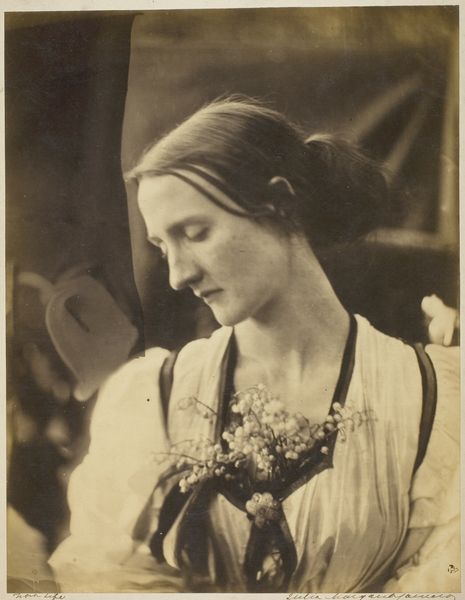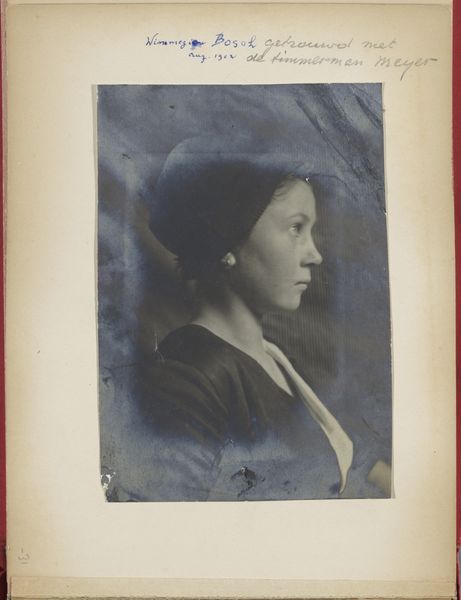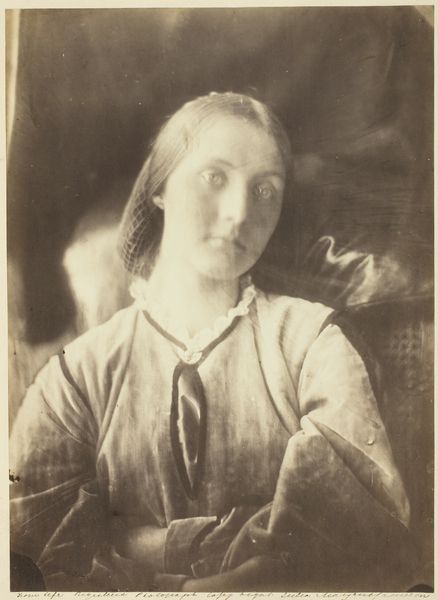
Dimensions: 24.5 × 19.7 cm (image/paper); 41.9 × 31.6 cm (mount)
Copyright: Public Domain
Editor: Here we have Julia Margaret Cameron's 1864 gelatin silver print, "Julia Jackson." There’s such a dreamlike quality to it. What strikes me is how ethereal yet haunting it feels. What do you see in this piece? Curator: I see a powerful commentary on Victorian ideals of beauty and femininity. Cameron, though celebrated, challenged those very ideals by emphasizing the interiority of her subjects, often women, over flawless representation. Look at the soft focus. What does it tell us? Editor: Well, it's less about capturing objective reality, and more about… suggestion? Almost a romantic idealization, despite the stark contrast. Curator: Exactly. And who was Julia Jackson? Mother to Virginia Woolf, an iconoclast in her own right. Cameron's portraits, then, become more than simple depictions; they are visual arguments about women’s intellectual and emotional lives during a time of stifling social constraints. It asks, "how much is elided? How much remains unseen, even in an image?" Editor: So, Cameron used the aesthetic of Romanticism not just for beauty, but to hint at a deeper, perhaps even subversive, message about women's roles? Curator: Precisely. Think about the very act of a woman controlling the means of representation at this time. Photography, even in its nascent stage, held a power that Cameron wielded to give visibility – albeit a softened one – to the complex lives of women. Her style becomes a language, an active voice. Editor: That's fascinating! I’d only thought of the aesthetic choices, not the socio-political context behind them. Curator: By understanding both, the artwork becomes far more profound. We reveal history's layers, seeing Cameron's portraits not just as pretty pictures but as potent statements. Editor: It really changes how I view not just this piece, but portraiture in general. Curator: Indeed! And that’s the exciting thing about engaging with art—it opens new ways of seeing and understanding the world around us.
Comments
No comments
Be the first to comment and join the conversation on the ultimate creative platform.

